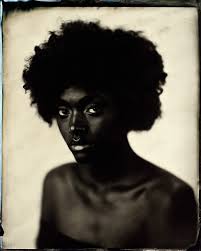The Art and Craft of Wet Plate Photography
Wet plate photography, also known as collodion photography, is a fascinating and intricate process that harkens back to the early days of photography in the 19th century. This traditional photographic technique involves creating an image on a glass or metal plate coated with a light-sensitive emulsion.
Unlike modern digital photography, wet plate photography requires meticulous preparation and careful handling of chemicals. The process typically involves coating a plate with collodion, sensitising it in a silver nitrate solution, exposing it in a camera while still wet, and developing the image immediately afterwards.
One of the defining characteristics of wet plate photography is its unique aesthetic. The images produced have a timeless quality, with rich tones and fine details that give them a distinctively vintage look. This artistic style has attracted photographers seeking to capture the essence of bygone eras or to add a sense of nostalgia to their work.
Despite the challenges posed by working with volatile chemicals and delicate materials, many photographers are drawn to wet plate photography for its hands-on approach and the sense of craftsmanship it entails. The process rewards patience, precision, and creativity, allowing photographers to create truly one-of-a-kind images that stand out in today’s digital age.
Wet plate photography has experienced a resurgence in recent years as more artists and enthusiasts rediscover the beauty and artistry of this historic technique. Workshops, exhibitions, and online communities dedicated to wet plate photography have emerged, providing resources and inspiration for those interested in exploring this captivating art form.
Whether you are an experienced photographer looking to expand your skills or simply curious about alternative photographic processes, wet plate photography offers a unique opportunity to delve into the rich history of image-making. Embrace the challenges and rewards of this time-honoured craft, and discover the magic of creating tangible works of art through the alchemy of light and chemistry.
Understanding Wet Plate Photography: Key Differences, Techniques, and FAQs
- What is wet plating?
- What is the difference between wet and dry plate?
- What is a wet plate in photography?
- How do you shoot a wet plate?
What is wet plating?
Wet plating, also known as wet plate photography or collodion photography, is a historic photographic process that involves creating images on glass or metal plates coated with light-sensitive chemicals. This meticulous technique requires the plate to be coated with collodion, sensitised with a silver nitrate solution, exposed in a camera while still wet, and developed immediately after exposure. The term “wet plating” refers to the wet state of the plate during the entire process, distinguishing it from dry plate and other modern photographic methods. This intricate and time-consuming process results in unique images with a vintage aesthetic, making wet plating a captivating art form cherished by photographers seeking to capture the essence of bygone eras.
What is the difference between wet and dry plate?
In the realm of photography, a common query revolves around the distinction between wet plate and dry plate processes. The key disparity lies in the materials and techniques used during image creation. Wet plate photography involves coating a plate with a light-sensitive emulsion just before exposure, requiring immediate development while the plate is still wet. On the other hand, dry plate photography utilises plates pre-coated with a dry emulsion, allowing for more convenience and flexibility in terms of exposure times and development. Each method offers unique challenges and artistic possibilities, catering to photographers seeking either the hands-on craftsmanship of wet plate or the convenience of dry plate techniques.
What is a wet plate in photography?
In the realm of photography, a wet plate refers to a glass or metal plate coated with a light-sensitive emulsion used in the wet plate photography process, also known as collodion photography. This traditional photographic technique, popular in the 19th century, involves sensitising the plate with a silver nitrate solution, exposing it in a camera while still wet, and developing the image immediately afterwards. The term “wet plate” derives from the necessity of keeping the plate wet throughout the process to ensure successful image capture. The unique characteristics of wet plate photography, including its vintage aesthetic and meticulous craftsmanship, continue to captivate photographers and enthusiasts seeking to explore the artistry and history of this captivating medium.
How do you shoot a wet plate?
Shooting a wet plate photograph involves a meticulous and precise process that requires careful attention to detail and expertise in handling the delicate materials involved. To shoot a wet plate, one must first prepare the glass or metal plate by coating it with collodion and sensitising it with a silver nitrate solution. The plate is then loaded into a large format camera, exposed to light to capture the image, and immediately developed before the emulsion dries. This method demands patience, skill, and a deep understanding of the chemical reactions that occur during each step of the process. Mastery of wet plate photography comes with practice and experience, as photographers learn to navigate the complexities of this historic technique to create stunning and timeless images.

